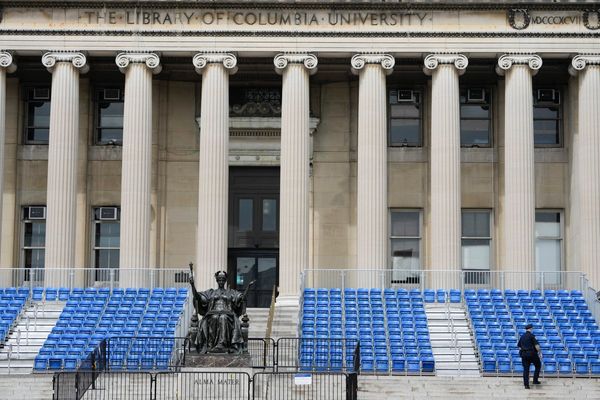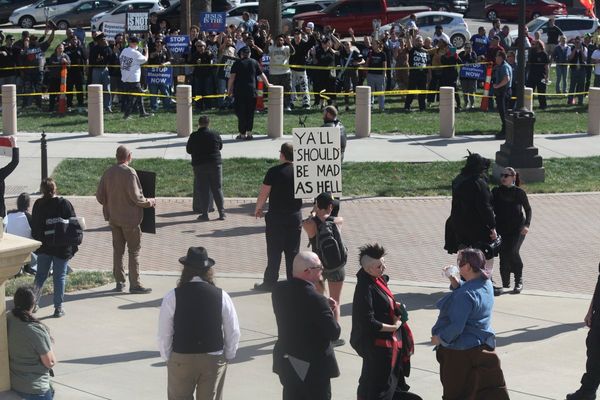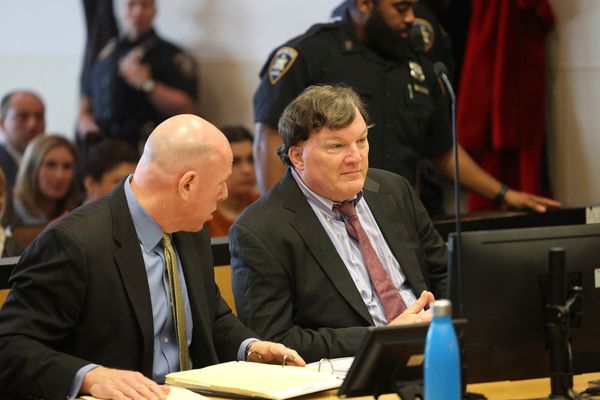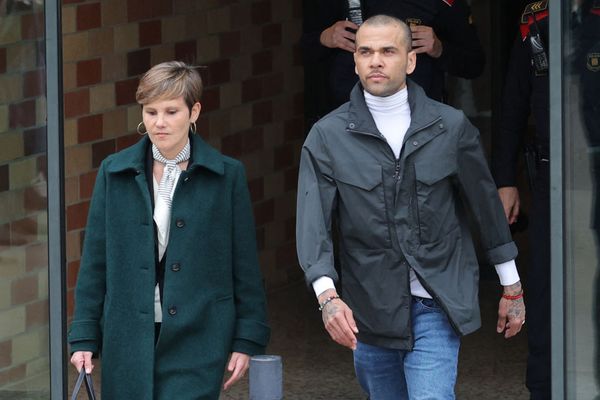BALTIMORE — Cynthia Tensley for years has organized a “vigil for life” each time someone is killed in Carrollton Ridge.
For each person, even for those who lived elsewhere, Tensley tries to find a photo to celebrate their role as a friend or brother. The community association president said she wants to help her neighborhood heal.
But by late December, Tensley had fallen behind. She counted at least 10 people she hadn’t yet commemorated.
The 66-year-old plans to step down as president next year, hoping someone younger will replace her.
Derwin Hannah, too, is growing numb. Known for calming distraught relatives at crime scenes and mediating between police and bystanders, he used to run toward gunfire. He hardly flinches at the sound anymore.
“It’s a great community. It’s in a great space,” Hannah said of the Southwest Baltimore neighborhood. “It’s just that people have lost hope.”
Baltimore surpassed 300 homicides for the eighth year in a row in 2022, recording 332 homicides as of Friday afternoon, just slightly below the 334 total for all of 2021.
Carrollton Ridge outpaced all other city neighborhoods in deadly violence for the third year running. Fifteen people were killed there in 2022, five more homicides than the community with the next-highest total, Northeast Baltimore’s Frankford.
City leaders have condemned stubbornly persistent violence and point to steps they say show promise, such as a redesigned intervention program — a pilot due to expand targeting those at-risk of becoming shooting victims or perpetrators — and a rise in arrests for firearms offenses.
Still, the city has struggled to tamp down violence and address legacies of poverty, racism and disinvestment. Its police department, which remains under a federal consent decree that requires reforms to end unconstitutional actions by officers, has struggled with staffing. And killings of a student at Mergenthaler Vocational Technical High School, a violence interrupter for the Safe Streets anti-violence program and a man who swung a bat at a group of squeegee workers, among others, dominated headlines.
Not far from Hannah’s home, trees protrude from abandoned rowhouses and trash fills an alley. Tattered stuffed animals memorialize a shooting victim on one street. A block away, Patron tequila bottles mark the site of another killing.
Around the corner, there are signs of hope: The revitalized park where Hannah coaches youth sports has a new playground. An entrepreneurship program operates out of a former elementary school. The community garden is empty, but it could blossom with some attention.
Democratic Mayor Brandon Scott, who has championed a five-year violence prevention plan, said while Baltimore is not where “we need to be,” officials would push to improve and deepen anti-violence work.
“It is clear that we are moving forward, but that this work has just begun,” Scott said at a Dec. 21 news conference on the year’s violence in the city.
Carrollton Ridge and other pockets spread across Baltimore face vacant homes, drug use, food or transportation deserts, limited business activity and other issues, said Democratic Councilman Mark Conway, who chairs the City Council’s public safety committee.
“We’re trying to resolve issues in communities that have struggled ... for many decades,” Conway said. “It’s very difficult to turn communities around overnight, dare I say, impossible.”
Trauma from living in neighborhoods afflicted by gun violence transcends victims and grieving relatives.
Studies have likened post-traumatic stress disorder in high-violence communities to war-torn countries. They’ve also found that children who lived near where a homicide happened suffered lower test scores in school around the time of the killing, Heather Warnken, director of the University of Baltimore School of Law’s Center for Criminal Justice Reform, said in a video presentation by the U.S. Justice Department’s Office for Victims of Crime.
Not giving people support after violent incidents “substantially” increases their risk of being victimized or harming others in the future, she said.
“There are so many missed opportunities for prevention when we don’t help people heal,” Warnken told The Baltimore Sun.
Despite his efforts to improve his community, Hannah has watched it deteriorate.
In the early 2000s, Hannah said, his block of South Bentalou Street was occupied by homeowners and a few renters. Now, it’s mostly short-term renters living alongside vacant homes, including two empty houses on either side of his rowhouse. He padlocked the house next door after multiple break-ins, but the roof is collapsing, making him fear for his home.
“People look for places to commit crimes,” Hannah said. “Places like this — what’s more perfect than to come to an area where you think nobody’s watching, or nobody’s going to report anything, or nobody cares?”
There are 779 properties in Carrollton Ridge registered as vacant by the city, more than any other neighborhood except Broadway East in East Baltimore.
Areas with high concentrations of vacant homes also were hot spots for homicide and weapons violations in Cleveland, a 2017 study by the Center on Urban Poverty and Community Development at Case Western Reserve University found.
It’s one of the “root cause” issues that Police Commissioner Michael Harrison said can push people toward crime — issues that are both difficult to overcome and “far larger” than policing.
Harrison told The Sun he hopes a 2023 expansion of the city’s Group Violence Reduction Strategy and the police department’s redrawn district boundaries will benefit Carrollton Ridge.
Democratic Councilman John Bullock, who represents the neighborhood, added he sees promise in a city pilot project to reduce crime by improving environmental conditions, such as adding lighting, boarding up vacant houses or removing trash.
“Whether it’s dealing with trash or dealing with sidewalks and trees,” Bullock said, “all those are contributors to crime, or creating the climate where crime can thrive.”
Two of the people killed in Carrollton Ridge in 2022 were shot in rowhouses described by police as abandoned. All but one of the neighborhood’s 15 homicides happened on a block with at least one property listed as vacant by the city — a measure which does not account for all the homes that are abandoned, unoccupied or not legally inhabited.
Gangs and neighborhood crews seek out vacant homes to use as home bases, as well as places to stash guns and drugs, said retired detective Joe Landsman, who spent more than half of his 22-year career with the Baltimore Police Department investigating organized crime and group violence.
“The structure of these organizations, they build off of these vacants. It’s a never-ending problem with them,” Landsman told The Sun. “If you’re talking about group violence, I don’t think you’d find one where they’re not using a vacant home.”
Squatters took over a Carrollton Ridge rowhouse and used it to sell drugs, a homeowner complained to the city before a man was shot to death there and the house burned. Federal prosecutors say the man found dead in May was a marijuana dealer from California who was taken hostage and held for ransom in the rowhouse on Furrow Street by a Baltimore distributor.
Tensley, the community association president, has observed families moving into her block over the past few years that she suspects are gang-affiliated, noting that two young people attempting to set up a drug corner told her “we own this block.”
The police commissioner didn’t provide specific motives for the neighborhood’s killings, but said “many” stem from group violence. In the neighboring Western District, the pilot Group Violence Reduction Strategy program led to drops of more than 30% in fatal and nonfatal shootings through the end of November. Harrison expressed optimism about the pilot’s expansion in coming months to the Central and Southwest districts, suggesting it could help Carrollton Ridge.
Other areas that saw high levels of violence in 2022 included Northwest Baltimore’s Central Park Heights, Coldstream Homestead Montebello in East Baltimore, Frankford in the Northeast and South Baltimore’s Brooklyn and Cherry Hill neighborhoods.
Across the city, about 90% of all homicide victims were Black. Carrollton Ridge was no different; at least 13 of 2022′s 15 homicides victims were Black.
More residents, including Hannah’s adult son, have decided to leave the community for keeps, abandoning more homes that are then vulnerable to thefts or fires. Between 2010 and 2020, the neighborhood’s population shrank by more than 35%.
“You find people not wanting to walk the streets anymore. You find people not wanting to help people,” Carrollton Ridge resident Cory Austin told The Sun. “People would stop and have conversations normally, but they don’t do that anymore. They don’t trust anyone.”
Among the friends Austin said he has lost to gun violence in recent years was 21-year-old Caron McCaskill, who was gunned down April 19. Austin described McCaskill as a “funny, laid-back dude.” Police arrested a suspect in McCaskill’s killing, but charging documents for Isaiah Bell offer no clues about a motive.
Killings in the community often hit close to home for young people, said Michelle Suazo, director of the The Food Project, a nonprofit that provides neighborhood youth with jobs and mentorship. Suazo’s organization operates out of the former Samuel F.B. Morse Elementary School. The school closed in 2017, delivering a blow to the neighborhood.
Several teens in the program have been personally touched by gun violence, she said, including 18-year-old Troy Rush Jr., shot in 2020, then again, this time fatally, the following year.
The University of Baltimore’s Warnken was the lead author of a report evaluating Baltimore’s treatment of shooting victims that found the city was “criminalizing” residents most likely to be impacted by violence, rather than supporting them.
Warnken said people interviewed described the city as “resource rich,” but lacking in coordination. The report recommended city leadership take stock of neighborhood-level resources combating violence and trauma to better coordinate and support their work.
Bullock and Conway, the City Council members, said the city should be supporting neighborhood organizations, calling “boots on the ground” vital.
Harrison, too, called partnerships and building relationships with community members “critical to anything we want to do.”
“Without trust, there can be no relationship. Without relationship, there can be no partnership. Without partnership, there’s no flow of information,” Harrison said.
Officials also noted during the year-end news conference that there will be a new Democratic governor and a new top prosecutor in Baltimore in 2023. Scott, the mayor, said both are excited to work in “true partnership” with the city and said it’s important to focus on all aspects of the justice system, not solely police or city anti-violence programming.
“I’m not a judge, I’m not a prosecutor, right?” Scott said. “Without us talking about the completeness of what goes into justice in our community, we will allow our public to (think), ‘Hey, once police arrest someone, it’s over. Once Safe Streets mediates in some conflict, it’s over.’ There’s a lot of things that come along with that.”
Austin and other residents said the neighborhood needs job opportunities for young people, mental health treatment and investments in housing. Advocates say residents need services, like a pharmacy or laundromat, close to home.
Tayshawna Barnes, a youth leader with The Food Project who helps run an associated restaurant across the street, wants city leaders to show more of a presence in Carrollton Ridge.
“We need more attention down here, because what we’re doing across the street, and what we’re doing here, is very good,” she said.
-------
(Baltimore Sun data journalist Steve Earley contributed to this article.)
-------







